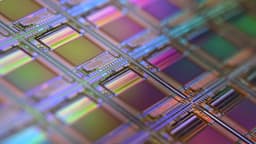Understanding the Magic Behind GPU Operations
Graphics Processing Units, commonly known as GPUs, are the wizards of the computing world. They have a highly specialised skill set focused on making images, videos, and animations look smooth and stunning on your screen. Whether you're watching a movie, playing a video game, or simply scrolling through photos on your phone, the GPU is hard at work behind the scenes, casting its spells to give you the best visual experience possible.
You might find yourself wondering, "What is this magic, and how does a GPU weave such enchanting visual tales?" Let's take a casual stroll through the land of pixels and processing to discover the secrets of how a GPU works.
GPU: The Graphics Wizard
Picture a GPU like an artist with a very sharp pencil, sketching scenes at an incredibly fast pace. This artist doesn't do just one drawing at a time. Instead, they work on thousands of tiny parts of many drawings all at once. That's because a GPU excels at parallel processing, which means it can handle many operations simultaneously.
The GPU's Toolbox
The GPU contains a toolbox filled with an array of cores or mini artists. These cores are less complex than the brain of the computer – the CPU, or Central Processing Unit – and are specially crafted for handling specific types of calculations, particularly those related to graphics and rendering.
While a CPU might have up to a few dozen cores optimized for handling a wide range of tasks and logic, a GPU contains hundreds or even thousands of smaller cores. These cores are designed for raw processing power, perfect for the repetitive, mathematical, and simultaneous tasks essential to creating complex visual effects and rendering high-resolution three-dimensional scenes.
Busy Bees in a Hive: The Workings of a GPU
Imagine each of these GPU cores is a busy bee in a hive, and every bee is working on a tiny portion of the scene. They don't craft the entire picture by themselves. Instead, they buzz around, putting together small pieces of the visual puzzle, which, when combined, create the beautiful images and smooth animations we perceive on our screens.
When a game is running or a 3D model is being created, the GPU steps in to construct a wireframe, which is like a skeletal structure of a scene made out of simple shapes. Then, these shapes are filled in with textures – the colors, patterns, and fine details that make the visuals realistic and lively.
Our digital artist friends, the GPU cores, also handle light sources, shadows, and reflections. They apply complex mathematical formulas to simulate the way light interacts with objects, bounces off surfaces, and creates shades, which is a critical role in making the scenes as close to real-life as possible.
The GPU and the Illusion of Movement
One of the GPU's most mesmerizing tricks is creating the illusion of movement. To make this happen, it rapidly updates the image on the screen multiple times per second. This process is known as 'frame rendering.' The more frames a GPU can render per second, the smoother the motion appears. This frame rendering magic is crucial when you're racing down a track in a video game or enjoying a high-speed chase scene in a movie.
Beyond Gaming: The Versatile GPU
Although we often associate GPUs with gaming and entertainment, their powers extend far beyond these realms. They are also key players in areas such as scientific research, where they process large amounts of data at lightning speeds, and in artificial intelligence and machine learning, helping computers learn and make decisions.
In the professional and creative world, GPUs help architects envision their buildings with realistic rendering, and they assist graphic designers and video editors in bringing their ideas to life with precision and efficiency.
The Ever-Evolving GPU
Our GPUs are continually evolving, becoming quicker, smarter, and more efficient. Companies at the forefront of GPU technology, like NVIDIA and AMD, are dedicated to pushing the boundaries of what these processing powerhouses can achieve.
The GPU is like our very own digital illusionist. It magically transforms code and data into vibrant, intricate, and dynamic visual scenes with unmatched speed and efficiency. It's a workhorse of parallel processing, silently and tirelessly creating the visual wonders that make our digital experiences so immersive and enjoyable.
And that's a peek behind the curtain of how a GPU works – a device that may seem simple when we look at the smooth images on our screens, but beneath the surface lies a complex and captivating world of processing power and graphical prowess.












